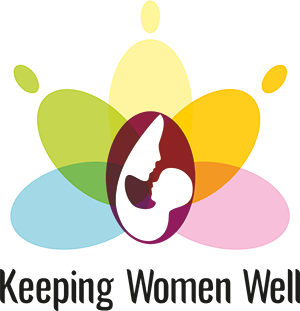
Endometriosis is a condition where tissue similar to the lining of the uterus grows outside it. It affects millions of women globally. This tissue can cause pain and other complications, significantly impacting daily life. Studies have shown that endometriosis affects roughly 1 in 10 women during their reproductive years, highlighting the pressing need for awareness and proper care. This common condition is often misunderstood and sometimes misdiagnosed. Awareness is crucial for early symptoms of endometriosis to be recognized and managed effectively.
The importance of recognizing the symptoms of endometriosis cannot be overstated, as timely diagnosis can lead to better health outcomes. This article discusses the most common signs of endometriosis and their effects on fertility and daily life. It provides insights into getting the right diagnosis and offers guidance on endometriosis symptoms and treatment options. By the end of this article, you’ll gain a thorough understanding and feel empowered to seek support or provide it to those in need.
Recognizing the Most Common Signs of Endometriosis
Endometriosis occurs when tissue resembling the uterus lining grows in areas it shouldn’t, like the pelvis. This growth causes various endometriosis symptoms, some of which are particularly distinct. Here’s a closer look at these common signs of endometriosis:
- Painful Periods: Many women experience cramping during menstruation, but endometriosis causes severe pain that is much more intense.
- Chronic Pelvic Pain: This is ongoing pain in the pelvic region, which is more constant than the usual discomfort of menstrual cramps.
- Heavy Menstrual Bleeding: Women with endometriosis sometimes experience unusually heavy periods or bleeding between cycles.
It’s crucial to identify the difference between endometriosis and PCOS symptoms. Both conditions can affect fertility and periods, but PCOS is marked by hormone imbalances and cysts, while endometriosis is known for its painful tissue growth.
Furthermore, the difference between endometriosis pain and menstrual pain can be stark. While menstrual cramps are common, endometriosis pain is often debilitating and can interfere with daily activities.
Unfortunately, endometriosis-related digestive symptoms can also mimic other conditions, such as IBS. These symptoms include bloating, diarrhea, and constipation, often leading to misdiagnosed symptoms of endometriosis.
Understanding these signs will help you differentiate between normal menstrual experiences and early symptoms of endometriosis that require medical attention.
Impact of Endometriosis Symptoms on Fertility and Daily Life
One major concern among women with endometriosis is how the condition affects fertility. Statistics show that 30-40% of women with endometriosis may struggle with infertility. How endometriosis symptoms affect fertility can include scar tissue and inflammation that interfere with reproductive organs.
Beyond fertility factors, the chronic pain and fatigue associated with endometriosis can greatly disrupt daily life. Regular tasks may become overwhelming, affecting work performance and participation in social activities. Managing endometriosis symptoms is key to maintaining quality of life.
Emotionally, conditions like dyspareunia (pain during intercourse) and chronic pelvic pain can strain personal relationships, creating stress for both partners. Support and open communication are crucial here.
Endometriosis symptoms flare-up triggers include stress and certain foods, making it vital to identify personal triggers for better symptom management. These flare-ups can temporarily worsen the condition, leading to intensified pain and interrupted routines.
Lastly, digestive issues often associated with endometriosis can lead to frustration. Symptoms like bloating can be mistaken for other illnesses, delaying a proper diagnosis. It’s crucial for healthcare providers to consider misdiagnosed symptoms of endometriosis to ensure patients receive timely and appropriate care.
Getting the Right Diagnosis and Effective Treatment
Knowing when to consult a healthcare professional is crucial. If you experience persistent endometriosis symptoms, it’s time to seek expert advice. Diagnostic procedures, such as ultrasounds or laparoscopies, help in accurately identifying endometriosis.
Consulting a specialist is significant, especially in regions where resources are scarce. By accessing expert care, women can explore effective endometriosis symptoms and treatment options, improving their overall health.
Treatment can include pain relief medications, hormone therapy, or surgery in severe cases. Exploring various approaches helps manage symptoms better, leading to improved life quality.
Policymakers must prioritize improving women’s health policies globally to provide essential healthcare resources and support systems.
Empowering Women and Building Support Communities
Empowering women through personal advocacy plays a vital role in achieving timely diagnoses and effective treatments. By advocating for themselves, women can receive the care they deserve.
Joining local support groups provides valuable shared experiences and resources. These groups can be a source of strength and understanding, offering communal support for those dealing with endometriosis.
Including men in conversations about endometriosis is essential in building a more supportive environment at home and in communities. Understanding the impact of endometriosis pain vs menstrual pain can help foster empathy among partners.
Finally, mental health support cannot be overlooked. Encouraging public awareness campaigns can help debunk myths and improve healthcare systems, ensuring that women with endometriosis receive the attention and support they require.
